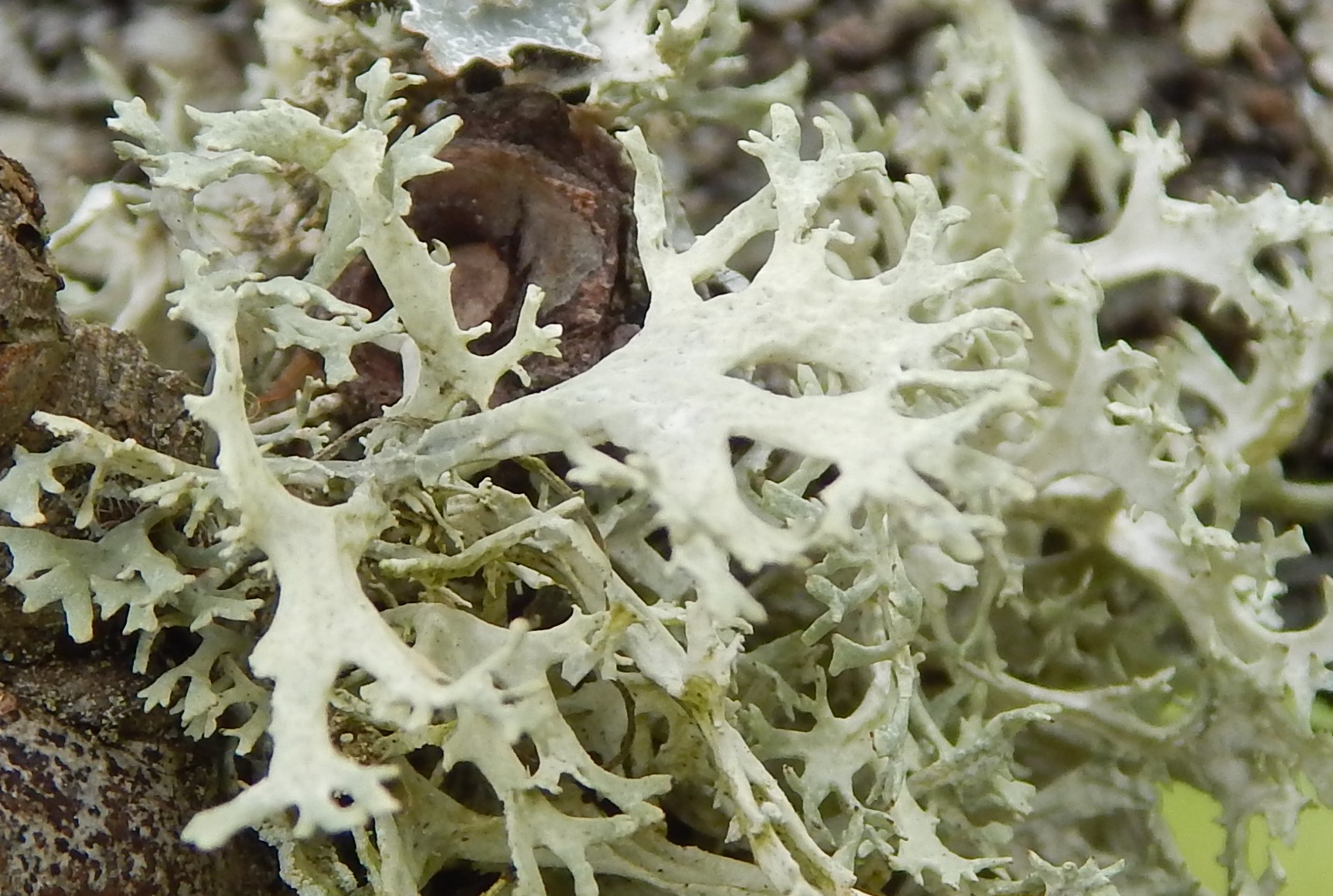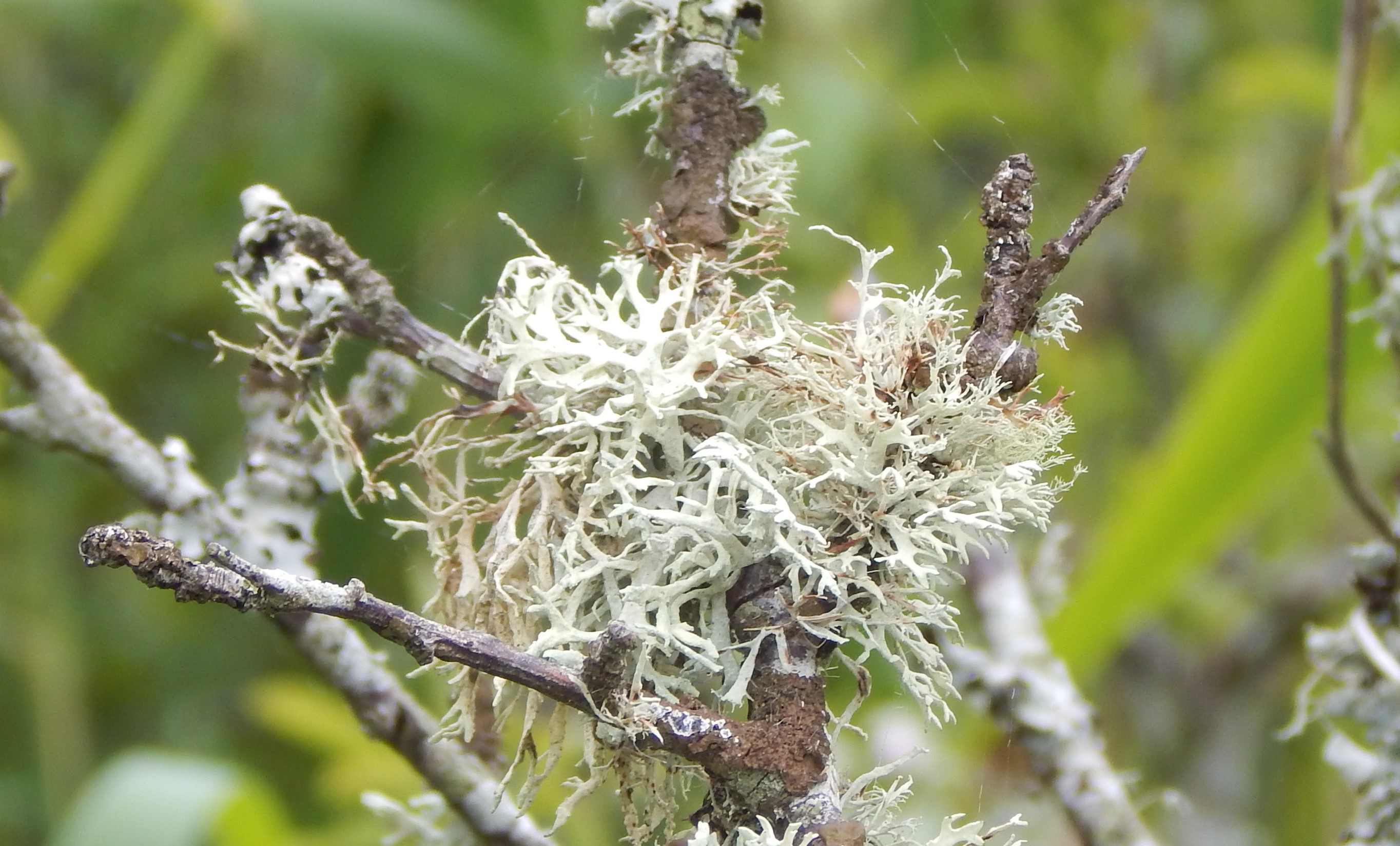
[141] Evernia prunastri, Oakmoss
Introduction
Evernia prunastri, Oakmoss or Oak-moss, is not a moss. It is a common and widespread species of Lichen that grows on trees.
This post will also consider Lichen in general
Taxonomy
See below under Lichen.
Kingdom – Fungi
Phylum – Ascomycota
Subphylum – Pezizomycotina
Class – Lecanoromycetes (Lichenized Fungi)
Subclass – Lecanoromycetidae (Mostly Lichen)
Order – Lecanorales (Mostly Lichen)
Family – Paemeliaceae (Bushy Lichens)
Subfamily – Parmelioideae
Genus – Evernia
Scientific Name – Evernia prunastri
Its original name was Lichen prunastri
The photobiont is a species of Trebouxia, a single-celled Green Alga.
Name
The word lichen, which can be used in an uncountable form, derives from the Ancient Greek word for some types of lichen.
Moss is an old English word that can be used for algae or lichen as well as for true Mosses. We have already seen [079] Irish Moss.
The derivation of the Scientific name is uncertain. Evernia, from Latin or Ancient Greek roots, could mean ‘growing well,’ and prunastri could relate to a tree in the genus Prunus, possibly Prunus spinosa, the Blackthorn.
Lichen
Lichen (either pronounced as ‘liken’ or rhyming with ‘kitchen,’) is a peculiar group of organisms that are hard to define taxonomically because they are actually two (or more) organisms in a symbiotic relationship. Each type of lichen consists of a species of Fungus containing within itself either a species of Green Algae or Cyanobacteria (or sometimes both). The fungus part is called a mycobiont. The other part, which provides food by photosynthesis, is called a photobiont – If it is an alga, it’s a phycobiont; for cyanobacteria, it’s a cyanobiont. There are other types of algae (not just green algae) that can, rarely, be symbionts and there may be more than one symbiont.
[You don’t have to know all this! The Green Algae are mostly single-celled and are not like the seaweeds we will meet later as [352] Green Algae. The Cyanobacteria are even smaller than single-celled organisms.]
The types of lichen that are commonly seen look like tiny plants or peeling paint. They are found on rocks or walls or living trees.
There are about 20 000 species of Lichen fungi but only a hundred species of associated photobionts. They are very slow-growing but also very long-lived and may be among the oldest known organisms.
Taxonomically, Lichens used to be considered separately but they are now defined by their fungal component as if they were simple fungi. As added complications, some fungi may form more than one type of lichen by associating with different symbionts. Both components of the symbiosis usually live together but, in some circumstances, each can survive without the other.
Description
Oakmoss is described as a fruticose lichen, forming a coral-like shrubby structure. It is found on trees but is not parasitical. The tree just provides a suitable location for the lichen. Its growth rate is of the order of one millimetre per year.
It is very pale green in colour.






You may find different types of lichen together or mixtures with moss. Here is Oakmoss growing with [363] Sunburst Lichen.

Habitat and use
Evernia prunastri is found over western and central Europe and North America. It occurs all over the United Kingdom.
It mainly grows on the trunk and branches of Oak trees but is also found on many other deciduous and coniferous trees.
Oakmoss is commercially harvested over Europe and is extensively used in the perfume industry.
Other Notes
Lichen can grow on any trees, especially established or slow growing ones.
See also
Only three types of lichen were common and recognizable enough for selection in these blogs and the next one will appear within a week …
